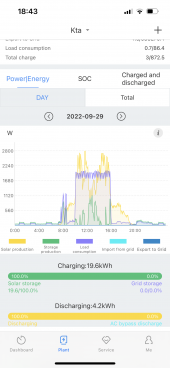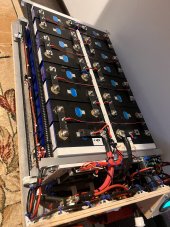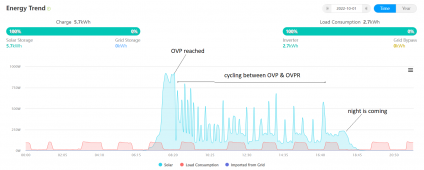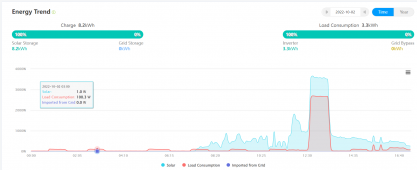A few things that do NEED Clarification for your own sanity and because there are LEADisms and Wives Tales associated with them due to misunderstandings.
LFP has a Very Flat Voltage curve and is even a bit peculiar when it comes to Lithium Based Batteries. ALL Lithium IS Millivolt & Milliohm sensitive, unlike FLA (Lead Acid) which is "Brute Force" old tech.
The "Allowable Voltage Range" for LFP starts at 2.500 and ends at 3.650 Volts per cell. There is No Harm/Damage cause when the cells remain in that range. Go Above or Below and you're causing harm. LFP Has a Low Internal Resistance compared to others and as such can put out a LOT of juice in a burst.
The "Working Voltage Range" is 3.000-3.400 Volts per cell, yes, that's right, ALL the deliverable AH is from that tiny 0.400V Range (280AH from a 280AH Cell.) for Grade A Nominal Voltage is always indicated as 3.200 Volts which IS 50% SOC.
By Charging to 3.425Vpc 54.8V (48V System) you are just over the top edge and allowing for the cells to settle (LFP Always settles a bit), this also prevents any Cell from becoming a Runner and going high. You can safely discharge to 2.900Vpc 46.4V again without issues and never ever see a "Runner Cell" which can go low fast. MAKE SURE Your Inverter has a Low Voltage Cutoff @ 2.650Vpc / 42.4V
That notion of keeping charge between 20%-80% or some say 10%-90% is under the "Assumption" of using the Allowable Voltage Range.
The only time to take the cells up to 3.600-3.650 is when Top Balancing them to "activate" the cells fully after long term storage from shipping.
Depending on your Solar Charge Controller (Terms vary between brands (what a PITA) there may be an EndAmps / Tailcurrent setting. Once the Endamps is reached, the SCC will change from Constant Current to Constant Voltage Variable Current (FLOAT) which will reduce amps as the cells fill up and increase resistance. This fully saturates the cells to THAT Voltage point ensuring you have them topped off and fully charged to capacity.
In case you cannot see my signature, check these links out.
Contribute to NEEY-electronic/JK development by creating an account on GitHub.

github.com
I've looked at several places for a simple, easy to read at a glance "chart document" for LFP. I could not find anything comprehensive. I discovered an XLS Worksheet in my stored file and took parts of that to create this chart, I did not...

diysolarforum.com
https://diysolarforum.com/resources/luyuan-tech-basic-lifepo4-guide.151/ More info that is handy within.
Hope it helps, Good Luck
Steve







